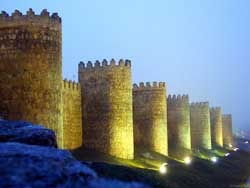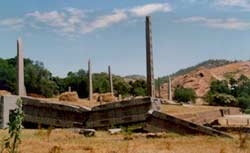Molten salt nuclear reactors using thorium instead of uranium can be built in deserts and provide electricity for 100,000 people.
A research team working for the Chinese government has announced a design for a commercial reactor, promising to be the world’s first reactor that does not require water for cooling, allowing for systems to be built in remote desert areas to supply power to more densely populated regions.
The molten salt reactor operates using liquid thorium instead of uranium, which is safer than traditional reactors and emits less radiation into the environment. Construction of the first commercial reactor is expected to be completed by 2030. China plans to build several reactors in the deserts and plains of the central and western regions. The country is also considering building reactors in several countries as part of the Belt and Road Initiative, as thorium cannot be used to manufacture nuclear weapons unlike uranium.

Molten salt nuclear reactors can be built in water-scarce deserts. (Photo: Reuters).
“Small-scale reactors have significant advantages in efficiency, flexibility, and economics. They can play an important role in the transition to clean energy in the future. It is expected that small reactors will be widely deployed in the coming years,” said Professor Yan Rui and colleagues at the Shanghai Institute of Applied Physics, in a study published in the Chinese Journal of Nuclear Engineering last week. “Molten salt reactors have the advantage of being multipurpose, compact, and highly flexible, while being easy to design. In recent years, the potential of small molten salt reactors has attracted international attention.”
A key motivation for the molten salt reactor program comes from President Xi Jinping’s declaration last year that China will achieve carbon neutrality by 2060, according to scientists involved in the project. Official plans indicate that reactors in the remote western part of the country will provide clean and stable electricity to the more densely populated eastern regions, in conjunction with wind and solar power plants.
The technology could also provide a new energy source for China’s warships, aircraft carriers, and submarines. The idea of a reactor powered by molten salt instead of solid fuel rods has been around since the 1940s. In the following decade, the United States began an experimental program to develop bombers powered by this technology.
In the 1960s, the U.S. built a facility to test the power generation capabilities of the technology, while other countries such as France, the Soviet Union, and Japan also conducted similar programs. The concept is appealing because liquid fuel acts as a self-cooling agent, eliminating the need for water, while the lower radioactivity of thorium reduces the risk of nuclear proliferation.
Initial projects all failed due to the inability to address issues such as pipes cracking easily under the corrosive effects of radioactive molten salt. However, researchers learned much from these experiments. Recently, researchers in this field have received steady support from the Chinese government. In 2011, Beijing approved a plan to build a prototype Thorium Molten Salt Reactor (TMSR) in Wuwei, a desert city in Gansu Province.
Many research teams across the country have also been mobilized to tackle technical issues that caused previous failures, such as developing radiation-resistant alloys from thorium salt at temperatures close to 1,000 degrees Celsius. Although the project has been delayed compared to the schedule, partly due to COVID-19, construction of the TMSR is expected to be completed next month, and equipment testing could begin as early as September 2021.
While the prototype can only produce 2 megawatts (MW), if successful, this will be the first time the idea becomes a reality. The commercial reactor designed by Yan and colleagues could provide up to 100 MW, less than uranium reactors but sufficient to power a residential area of 100,000 residents. Although the power plant requires additional equipment such as steam turbines, the reactor itself is only 3 meters tall and 2.5 meters wide, comparable to the size of a bathroom.
The reactor operates by allowing thorium to flow through it, participating in a nuclear chain reaction and transferring heat to an external steam generator before returning to the reactor to start a new cycle. This technology is safer than traditional nuclear reactors because, in the event of an accident, molten salt will flow into an underground containment tank. With a high melting point, molten salt will quickly cool and solidify without directly releasing solid and liquid waste, thereby preventing the dispersion of radiation into the environment.
China has some of the largest thorium reserves in the world. This silvery metal has weak radioactivity. Some scientists estimate that the country has enough thorium reserves to meet energy demands for at least 20,000 years. In contrast, its uranium reserves are among the lowest of the nuclear-armed nations. Although China is set to bring 7 to 8 new nuclear power plants online in the coming years, authorities remain concerned that fuel shortages could impact their energy security.






















































